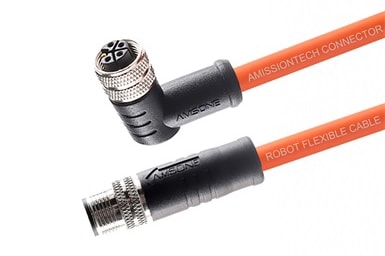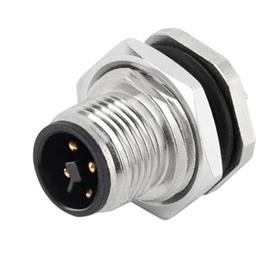Features and Applications of Robot Cables
Views: 5897
Author: Site Editor
Publish Time: 2023-04-14
Origin: Site
Robot cables are used in energy chains or applications with 3D motion. They are characterized by their flexibility and meet the extremely demanding requirements of the industry.
In addition, they also offer different properties, such as resistance to hydrolysis and microbes, UV rays and many other conditions.
There is a wide variety of robot cables available: hybrid cables, fiber optic cables (FOC), and many others of which we'll talk about their general uses.
Features of Robot cables
Here, we develop a complete range of robot cables, connectors and cable guides that can reliably transmit force, control and monitor signals, all while withstanding repetitive motion, as well as extreme bending and twisting.
i. Highly flexible cables for static, dynamic and torsional robots
ii. Non-metallic gland connectors for quick assembly and reliable connections
iii. Rectangular and circular connectors
iv. Abrasion resistant continuous flex conduits
Major Uses and Applications of Robot Cables
Robot cables are designed to be flexible, durable, and resistant to damage from repeated bending and twisting. They are commonly used in a variety of robotic and automated equipment applications, including:
1. Robotics
Robot cables are widely used in robotic arms, grippers, and other robotic components that require flexible cables to transmit signals and power while the robot is in motion.

2. Automation
Robot cables are also used in various automated equipment applications, such as conveyor systems, assembly lines, and industrial machinery. In these applications, the cables need to be able to withstand continuous flexing and bending.
3. Medical equipment
Robot cables are used in medical equipment, such as MRI machines, surgical robots, and other types of medical devices that require precise, flexible control.
These cables must be able to transmit signals and power while remaining flexible and lightweight.
4. Aerospace
Robot cables are used in aerospace applications, such as space exploration and satellite control.
These cables must be able to withstand extreme temperatures, radiation, and other environmental factors while transmitting signals and power to remote devices.
5. Automotive
Robot cables are used in automotive applications, such as automated assembly lines and robotic welding machines.
In these applications, the cables need to be able to withstand high temperatures and resist damage from exposure to oil, grease, and other automotive fluids.

Other applications include:
i. Equipment with torsion and bending movement, machine tools, automated material handling equipment, robots with multiple multi-axial joints, in power chains or machines with moving parts.
ii. Plant and construction engineering, robots articulated by several axes, automated handling equipment, use in energy chains or machinery with moving parts. Protection against water and dirt, resistant to friction wear.
Overall, robot cables are essential components in a wide range of robotic and automated equipment applications, where they provide flexibility, durability, and reliability for the transmission of signals and power.
Partner with us for premium robot cables
As one of the leading providers of robot cables, we offer you a wide range of connectivity solutions for any kind of applications demanding robot cables. For more information or to place an order, kindly click here to choose for yourself.

 EN
EN DE
DE JP
JP ES
ES SE
SE FR
FR IT
IT CN
CN 한국어
한국어 ภาษาไทย
ภาษาไทย بالعربية
بالعربية Nederlands
Nederlands Türkçe
Türkçe Język polski
Język polski Tiếng Việt
Tiếng Việt Zulu
Zulu Bahasa Malay
Bahasa Malay
